On April 4, 1925, the US Post Office issued the first three stamps in a multi-year series honoring important events and people from the American Revolution. The stamps were issued for the sesquicentennial (150th) anniversary of the Revolution.
US #617 pictures General George Washington leading colonial forces at Cambridge Common on July 2, 1775. This was two-and-a-half months after the battles at Lexington and Concord. A driving factor for this scene’s inclusion in the set was due to the famed “Washington Elm.” According to legend, Washington stood under the elm tree as he took command of the Continental Army. Over the years, the tree was badly damaged and was accidentally knocked over during repair attempts in 1923.
The image for this stamp was based on Henry Sandham’s 1885 painting, The Dawn of Liberty. Painted more than 100 years after the actual revolutionary war battle, it pictures an idealized version of the event, rather than an accurate account. In reality, the two officers pictured – Major John Pitcairn on the far right and Captain Jonas Parker in the foreground with his arm raised – focused on preventing their men from firing, rather than encouraging them to shoot. Some historians question whether any of the Lexington men fired at all, as only one British soldier was wounded while 10 Lexington men were killed and eight wounded. The scene on this stamp serves as a symbol of the Colonists taking a stand for their rights and beginning the war for their independence.
The earliest plans for the Lexington-Concord set included stamp designs featuring the Minuteman statues in both towns. While the Lexington statue honored local hero Captain John Parker, the Concord statue stood as a symbol of the universal American farmer, “ready to defend liberty on a moment’s notice.” In the end, the Concord statue was selected for this 5¢ stamp. On either side of the statue are tablets with lines from Ralph Waldo Emerson’s 1836 poem, Concord Hymn. At the time of its issue, this was the wordiest US stamp and was the first to include lines of poetry.
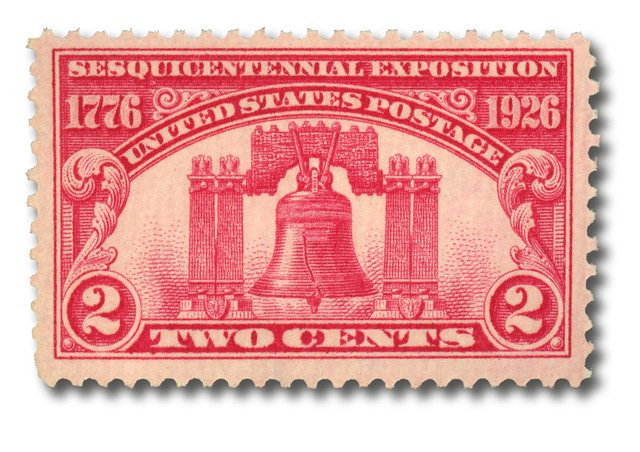
US #627 was issued to commemorate the 1926 Sesquicentennial Expo, which was a world’s fair held in Philadelphia. The event celebrated the 150th anniversary of the signing of the Declaration of Independence, and the 50th anniversary of the 1876 Centennial Exposition. A centerpiece of the expo was an 80-foot replica of the Liberty Bell, which was covered with 26,000 light bulbs.
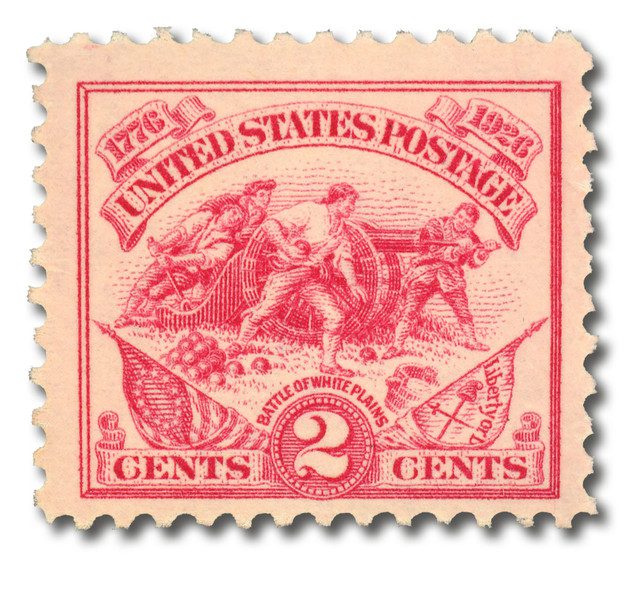
The Battle of White Plains was a Revolutionary War battle fought on October 28, 1776. This stamp is entitled “Hamilton’s Battery” in honor of Alexander Hamilton, an outstanding artillery commander, and his men. Hamilton later served as the first secretary of the US Treasury. US #630 features the same design but was produced as a souvenir sheet (America’s first!) for the 1926 International Philatelic Exhibition.
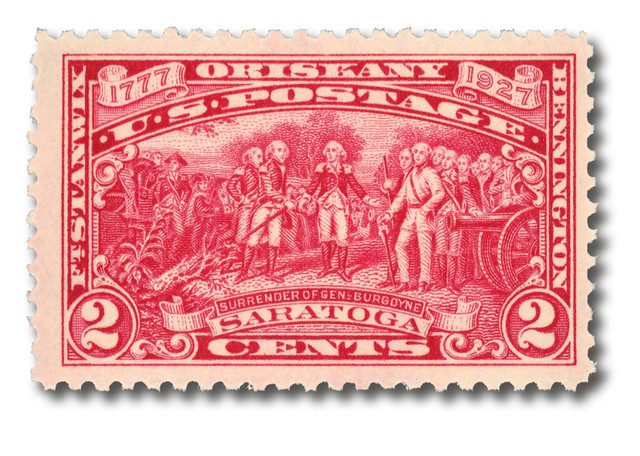
Although US #644 is called the “Burgoyne Campaign,” it commemorates several different events. In fact, General John Burgoyne isn’t the central character in the stamp and it wasn’t originally intended to honor him, as he was a British general fighting against America. The stamp pictures Burgoyne (left of center) handing his sword to General Horatio Gates of the Continental Army. The stamp image is based on John Trumbull’s 1821 painting Surrender of General Burgoyne.
From December 19, 1777, to June 19, 1778, the Continental Army, under the command of General George Washington, camped at Valley Forge. Valley Forge is located about 25 miles west of Philadelphia along the Schuylkill River. Washington took his army there after losing the battles of Brandywine and Germantown. Washington chose to camp at Valley Forge due to its defendable location and proximity to farm supplies and trade routes. That winter proved to be unusually harsh. The troops were poorly clothed and supplied, and had only the rough log shelters they had built themselves. To make matters worse, there was a smallpox epidemic. Of the approximately 10,000 troops camped at Valley Forge, about 2,500 died.
According to legend, Mary “Molly” Ludwig was the wife of an infantry sergeant. During the battle of Monmouth, she carried pitchers of water to the wounded soldiers, causing her to be nicknamed “Molly Pitcher.” When her husband was wounded during the conflict, Molly took his place at the canon and fought during the balance of the battle. As the anniversary of the Battle of Monmouth approached, New Jersey residents requested that a stamp be issued honoring the fabled heroine Molly Pitcher. However, the Post Office Department claimed it had issued its quota of commemoratives and couldn’t issue the stamp they wanted. After an extensive letter writing campaign, the department agreed to issue an overprinted stamp, as they had done with the Discovery of Hawaii stamp. While New Jersey residents were happy to have their stamp, collectors and the general public were unimpressed with the stamp’s lack of creativity, not even showing who or what Molly Pitcher was.
Clark became a lieutenant colonel in the Virginia militia. He assembled a force of 175 men and began fighting in the Northwest Territory – the land north of the Ohio River, south of Canada, west of Pennsylvania, and east of the Mississippi River. In 1778, Clark took Fort Sackville, and with it, Vincennes. The British were soon able to recapture the fort, but Clark again attacked and forced them to surrender. Clark’s victory at Vincennes and other settlements were key to the US claim of ownership of the vast Northwest Territory at the end of the Revolutionary War.
John Sullivan was born in Somersworth, New Hampshire, and practiced law in Durham. Although closely aligned with New Hampshire’s British governor as a young lawyer, Sullivan joined the fight for American Independence in the early 1770s. Sullivan served as New Hampshire’s delegate to the First and Second Continental Congresses, rose to the rank of major general in the Continental Army, and took part in several prominent battles during the War of Independence. Sullivan led a controversial expedition against the Iroquois confederacy in 1779. His force of 4,500 troops sought to eliminate England’s close allies by destroying their food supply. The Sullivan Expedition destroyed villages and crops across a broad swath of Pennsylvania and New York. Criticized for the brutality of the campaign, Sullivan resigned his commission in 1779.
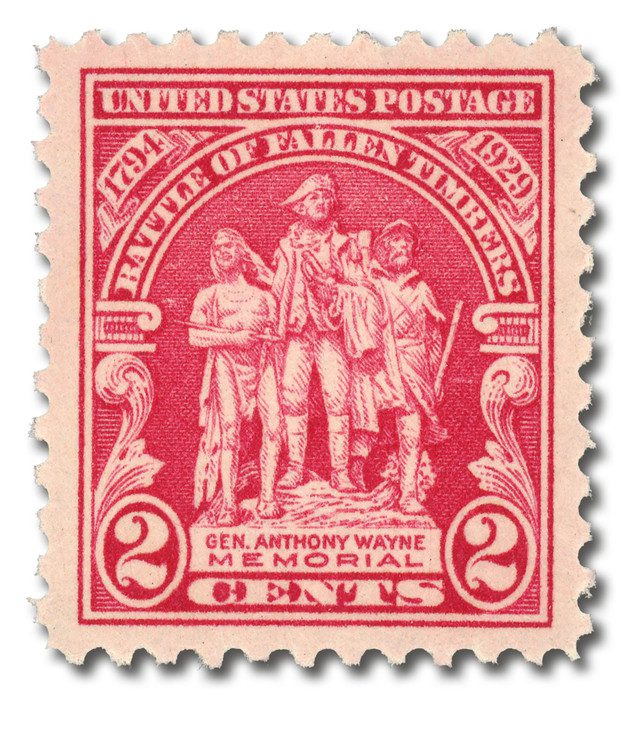
The United States gained title to the massive Northwest Territory from the British during the Revolutionary War. However, Native Americans, supplied and encouraged by the British, fought to defend their lands from white settlement. President George Washington sent military expeditions against them in 1790 and 1791, but they met with defeat. Then, in 1792, Washington appointed Anthony Wayne (1745-1796) head of the US Army. This brilliant tactician had earned the name “Mad Anthony” Wayne through his acts of reckless courage during the Revolutionary War. On August 20, 1794, Wayne’s forces defeated a large army of Native Americans at the Battle of Fallen Timbers, near present-day Toledo, Ohio. In 1795, Wayne forced the Natives to sign the Treaty of Greenville. This treaty made much of Ohioy available for American settlement.
During the struggle of the British to rid the Northwestern Territory from French occupation (French and Indian War), General George Braddock ignored the advice of George Washington about Native American methods of fighting from ambush. At the Battle of Braddock, British troops were scared by war whoops and confused by Native Americans fighting from behind trees. General Braddock was killed and his troops defeated. The battle featured several commanders besides Washington who would become prominent in the American Revolution. General Thomas Gage went on to become the British commander-in-chief at the beginning of the Revolution, Horatio Gates was a Colonial Army general who commanded American forces at the Battle of Saratoga, and Charles Lee became a major general in the Colonial Army.
US #689 commemorates the 200th anniversary of the birth of the Prussian-born General Baron Frederick Wilhelm von Steuben, whose exceptional services to the Colonial Army greatly improved their militarily techniques during the Revolutionary War.
Benjamin Franklin recruited this Polish-born nobleman for the American cause when they met in Paris. Pulaski is considered the “father of the American cavalry.” He earned this title through his daring service as a brigadier general both in battle, and as the principal organizer of the American cavalry system. Referring to “Pulaski’s Legion,” a British officer said they were “the best damned cavalry the rebels ever had.” Pulaski served with great distinction under General Washington at the Battle of Brandywine in September 1777. He was fatally wounded during the Siege of Savannah in 1779.
The Battle of Yorktown was the last major battle of the American Revolutionary War. At Yorktown, French and American forces worked together to crush the British army under General Charles Cornwallis. This stamp pictures General George Washington and his French allies, Lieutenant General Jean-Baptiste Rochambeau and Admiral François de Grasse.
In 1783, General George Washington issued a proclamation of peace from his headquarters at the Hasbrouck House in Newburgh, New York. This stamp commemorates the 150th anniversary of that proclamation which officially marked the end of hostilities of the Revolutionary War. This was the first stamp issued under President Franklin Roosevelt’s administration. An avid collector, Roosevelt selected the design for the stamp himself!
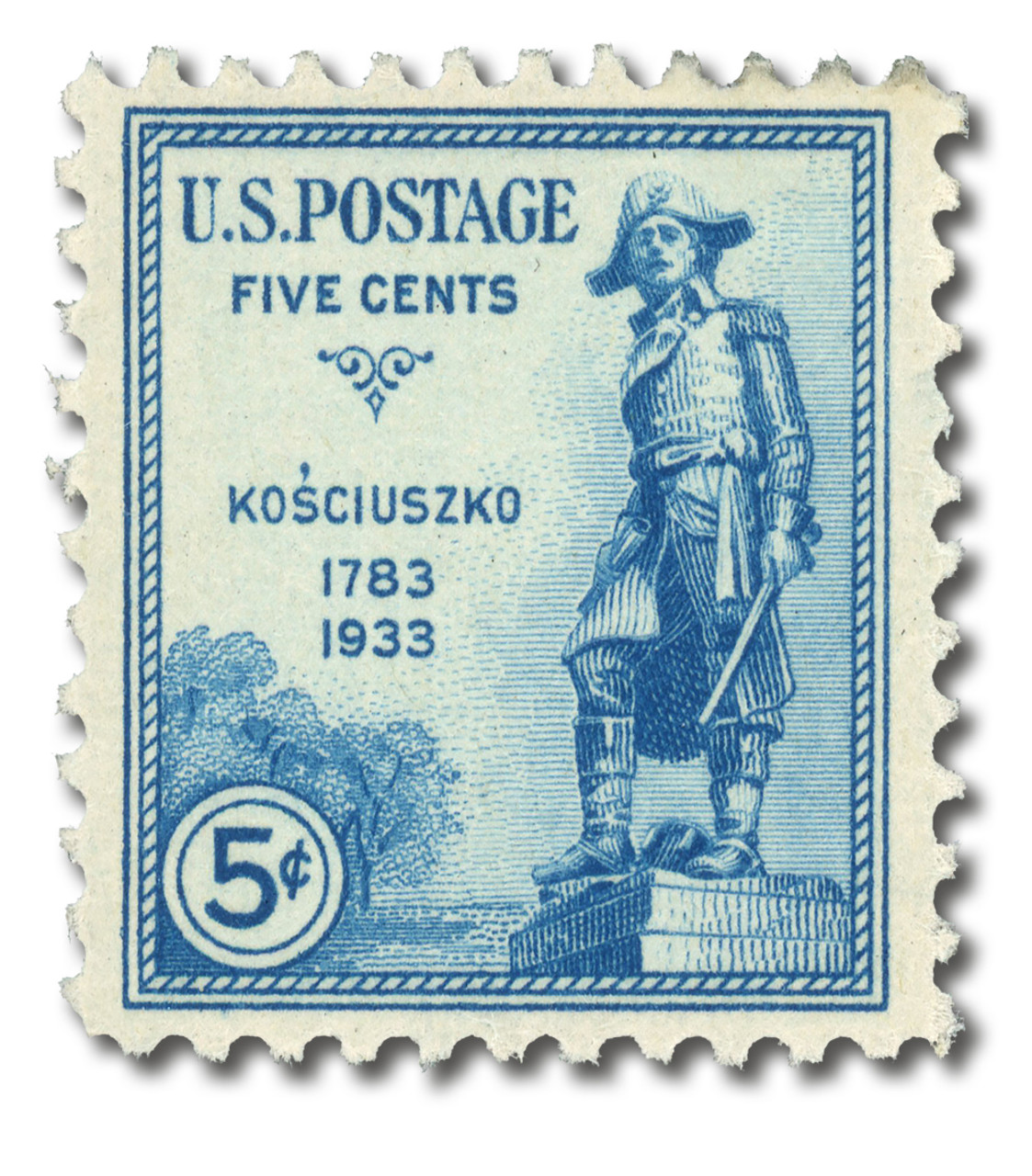
This Polish patriot fought for freedom in America and in Poland. He is often referred to as the Hero of Two Worlds. In 1776, he came to America and served with the Pennsylvania Committee of Defense in Philadelphia. There, Kosciuszko planned the fortifications for defense of Liberty Hall, the meeting place of the Continental Congress. His engineering skills were also used to fortify Saratoga, various areas of the Hudson River, and West Point. Kosciuszko returned to Poland in 1784. He led a heroic but unsuccessful uprising against Russian occupation forces in 1794.
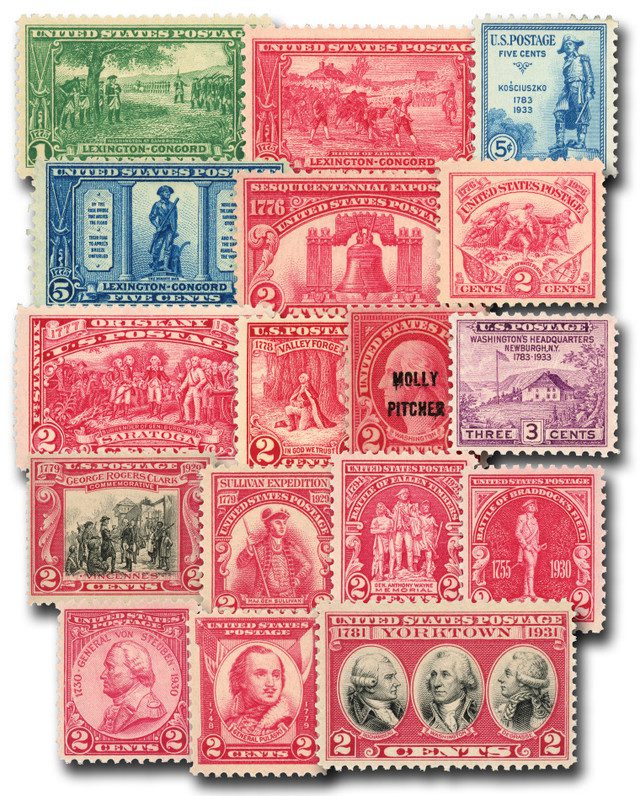
| FREE printable This Day in History album pages Download a PDF of today’s article. Get a binder or other supplies to create your This Day in History album. |
Discover what else happened on This Day in History.

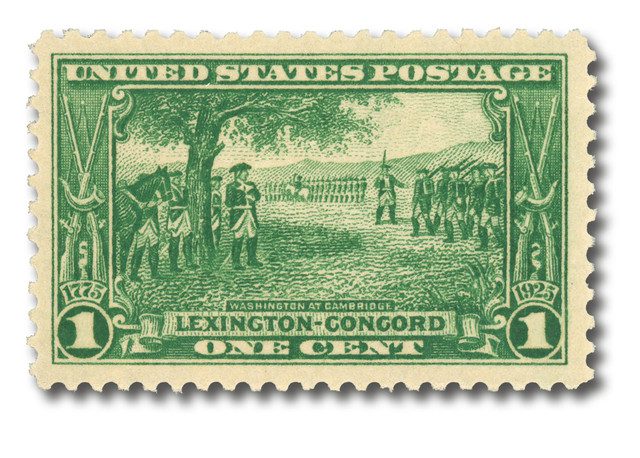
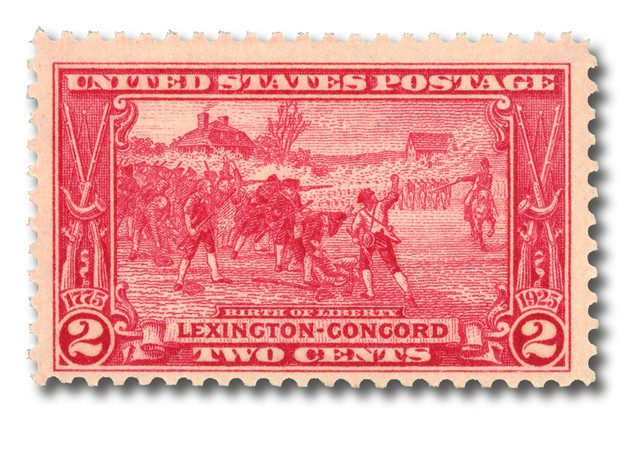
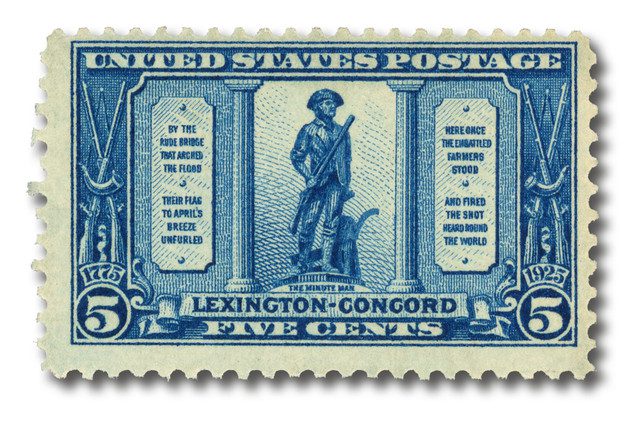
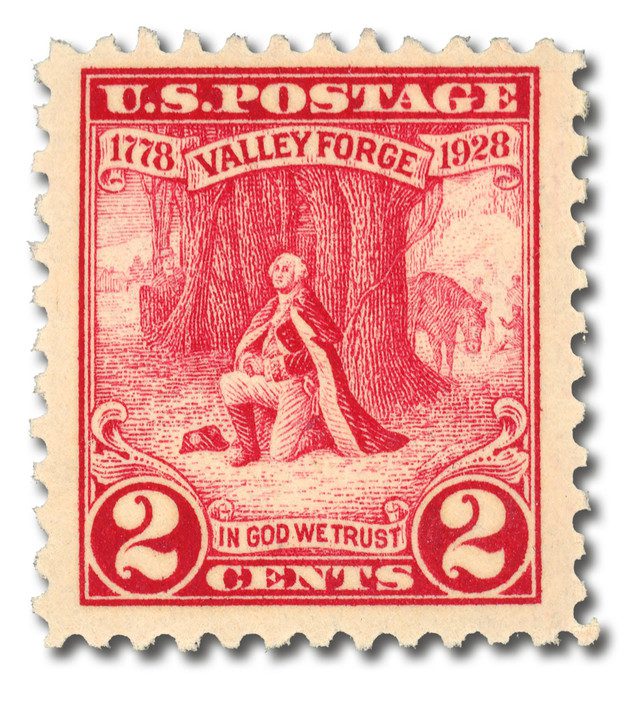
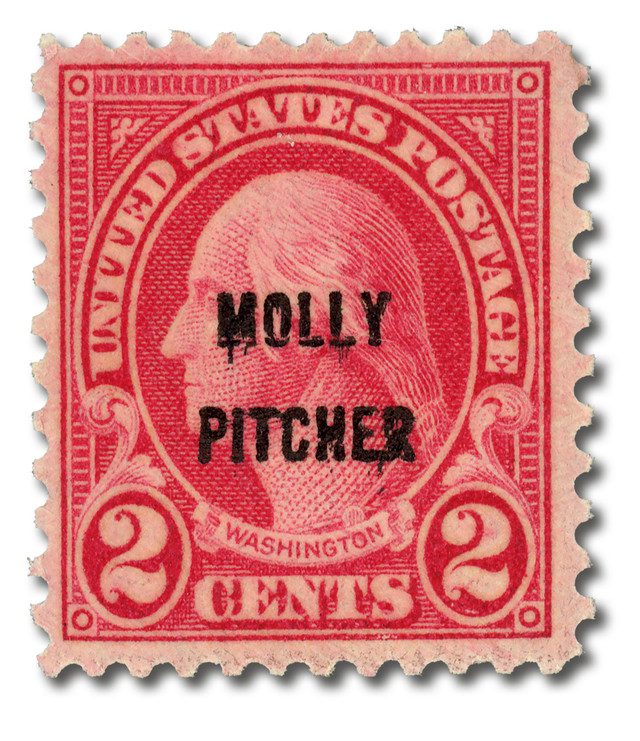

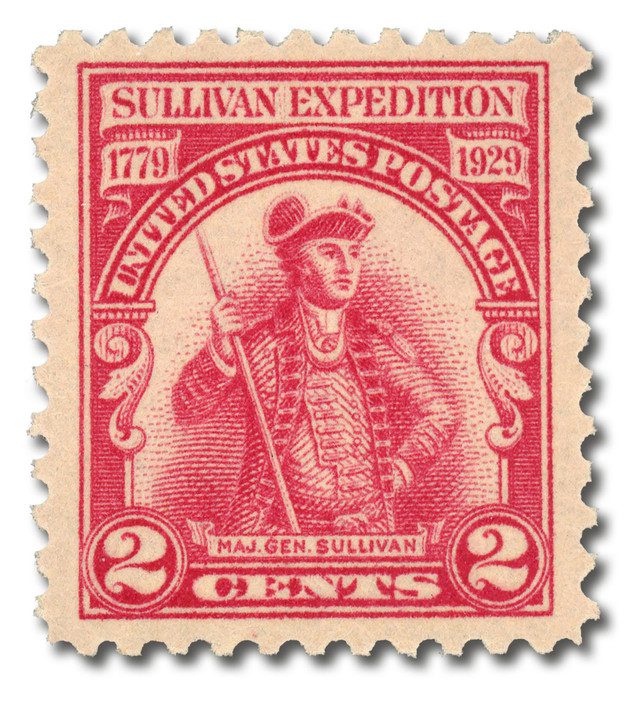
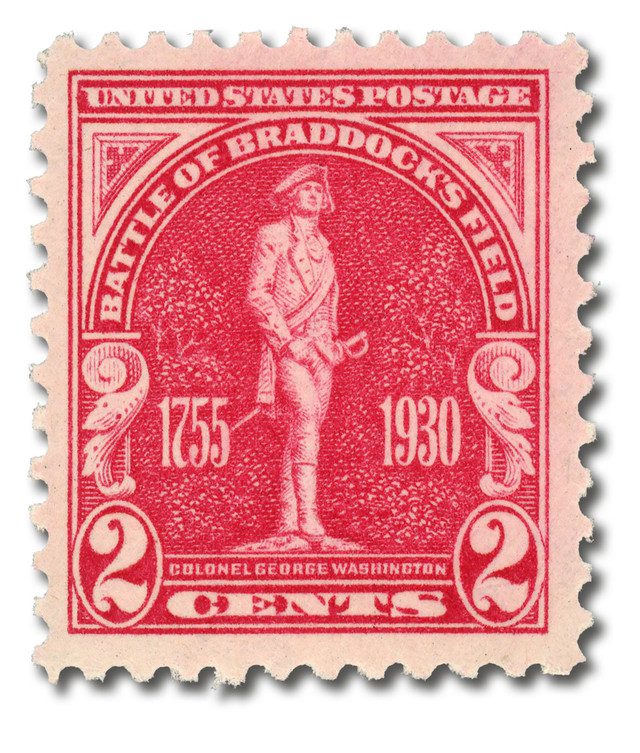
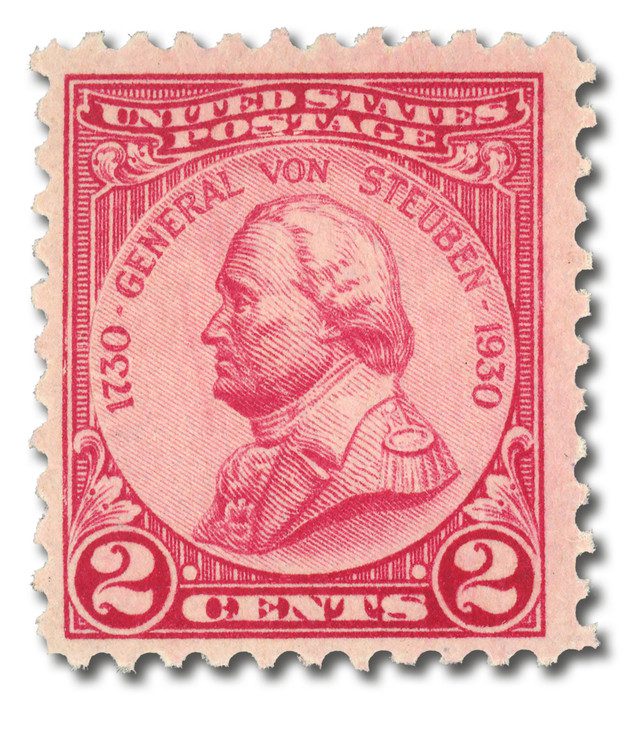
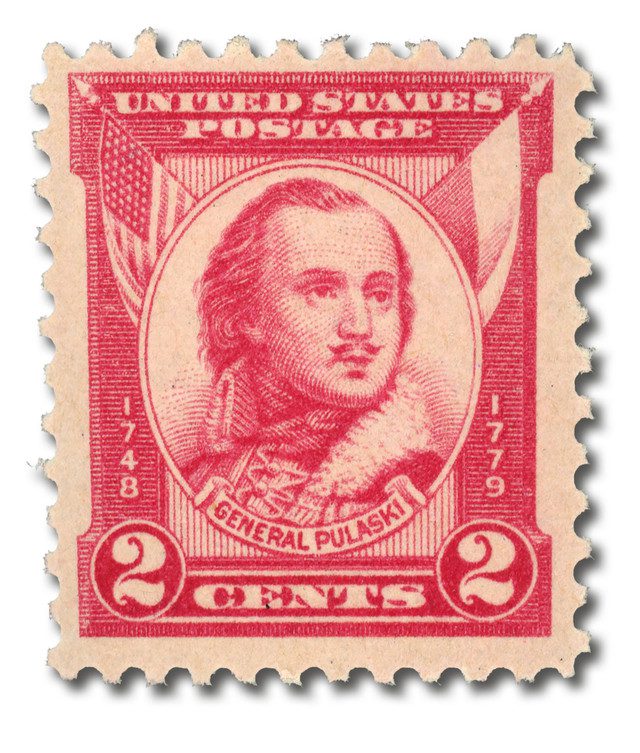

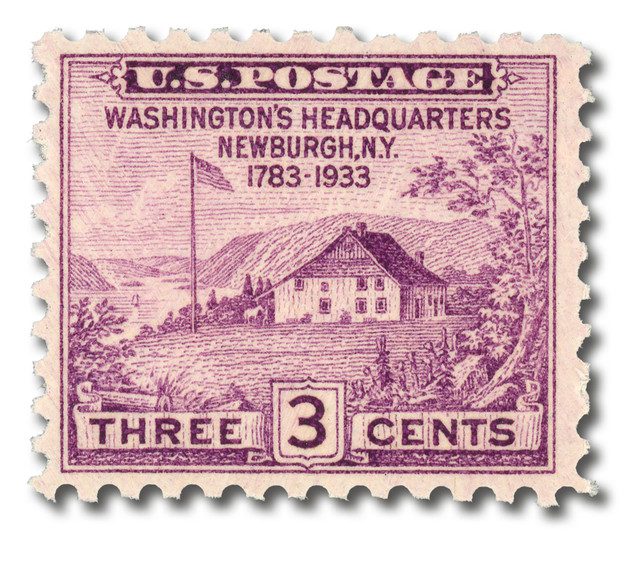
Quite the extensive article. Nicely done.
Agree
Could use this article to show my 8th grade Social Studies class when they study
the Revolutionary War.
Wow, what a GREAT article
General Pulaski died in 1779, not 1797. He was 34 years old.
A GREAT history update … descriptive and informing detail. Another Mystic whopper ! Thanks, again !!
great article, y can’t it be a PF?